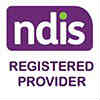Paratriathlon's were first experienced at the 2016 Brazilian Paralympics. Their introduction there brought them into the spotlight for athletes of all skills and levels.
Paratriathlons are in many regards the pinnacle of athletic performance, skill, and endurance. The event challenges participants to swim a distance of 750 meters, before climbing aboard their handcycle or tandem for a 20-kilometre ride, finishing up with a 5-kilometre sprint in a wheelchair. Paratriathlons are about half the distance of a full triathlon, and therefore full into the category of sprint triathlons — an event with a high focus on speed, not just endurance.
Even with the shorter distances, paratriathlons will push athletes to their absolute limits of physical and mental endurance and fitness. Before considering participating in an event, athletes should ensure they are capable and confident in their abilities.
How to Get Started?
With paratriathlons being such a tough physical and mental challenge, it's important to fully prepare yourself before beginning. There is no age or skill limit to begin participating, however, athletes should build up their fitness and endurance gradually first to avoid causing injury or damage.
Paratriathlon programs are available in every Australian state, and reaching out to your local program is a great way to get started. They will be able to help work with you on developing a plan to prepare you for your first event.
· Start small by entering shorter races and events before attempting the full-length paratriathlon.
· Join a local club with others to help you train and develop your endurance and fitness.
· Seek out and follow training regimes.
· Be careful not to overtrain. Overtraining can cause long-term damage and problems.
Eligibility and Categories
The rules and regulations for paratriathlons are created and maintained by the International Triathlon Union (ITU). Events are categorised and divided by participants disability and sex. The most basic requirement for a paratriathlon event is for competitors to have a medically diagnosed physical or visionary impairment.
The ITU has developed a system to score athletes physical and visual functionality and capability in order to provide fair and equal competition. By scoring the athletes on strength, mobility, and neurosensory coordination on a scale of 0 - 5, the organisers can categorise them and identify any devices or aid they may require.
The categories and classifications are:
PT1 - Wheelchair users. Includes athletes with comparable activity limitation and an impairment of, but not limited to: muscle power, limb deficiency, hypertonia, ataxia, athetosis that prevent the ability to safely ride a conventional bike and run. Through classification assessment, athletes must have a score of up to 6,400 points. Athletes must use a recumbent handcycle on the bike course and a racing wheelchair on the run segment.
PT2 - Includes athletes with comparable activity limitation and an impairment of, but not limited to, limb deficiency, hypertonia, ataxia and or athetosis, impaired muscle power or range of movement that through classification assessment have a score of up to 4,549 points. In both bike and run segments, amputee athletes may use approved prosthesis or other supportive devices.
PT3 - Includes athletes with comparable activity limitation and an impairment of, but not limited to, limb deficiency, hypertonia, ataxia and or athetosis, impaired muscle power or range of movement that through classification assessment have a score from 4,550 to 4,949 points. In both bike and run segments, the athlete may use approved prosthesis or other supportive devices.
PT4 - Includes athletes with comparable activity limitation and an impairment of, but not limited to, limb deficiency, hypertonia, ataxia and or athetosis, impaired muscle power or range of movement that through classification assessment have a score from 495,0 to 557,0 points included. In both bike and run segments, the athlete may use approved prosthesis or other supportive devices.
PT5 - Total or Partial visual Impairment (IBSA/IPC defined sub-classes B1, B2, and B3): Includes athletes who are totally blind, from no light perception in either eye, to some light perception but unable to recognize the shape of a hand at any distance or in any direction (B1) and partially sighted athletes with a visual acuity of less than 6/60 vision or visual field less than 20 degrees with best corrective vision (B2-B3). A guide from the same nationality and gender is mandatory throughout the race. Must ride a tandem during the bike segment.
Information provided by http://www.triathlon.org.au
How Can GTK Help?
GTK offers a wide range of specialist mobility aids and wheelchairs designed for participating in athletic events such as paratriathlons. Whatever your mobility needs, GTK has a solution to help. Furthermore, we offer a wide range of customisations to tailor your wheelchair or aid to match your unique requirements and style.
Contact the team at GTK to view our range of disability and accessibility equipment.



